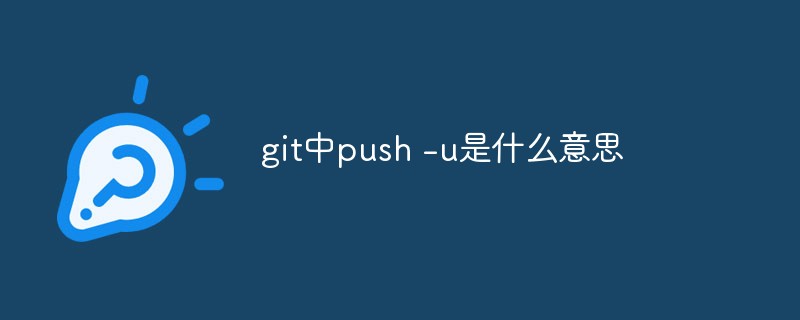In Go function testing, Mocks and Stubs allow isolation and verification of external dependencies. Mocks simulate the behavior of dependencies, while Stubs provide fixed values. To use Mocks, you need to use mockgen to generate mock files, introduce mocks in tests, and set mock expectations. To use Stubs, you need to introduce the stub package, create the stub, and assert whether the stub is called. By using Mocks and Stubs, we can improve the robustness and confidence of function testing.

How to use Mocks and Stubs in Go function testing
When performing function testing in Go, Mocks and Stubs are isolated and effective techniques for validating external dependencies. Below we'll explore how to use these techniques in testing.
What are Mocks and Stubs?
Mock is an alternative to mocking external dependencies, allowing you to specify their behavior and characteristics in your tests. In contrast, a stub is a replacement that provides fixed values without simulating the behavior of dependencies.
Use Mocks:
Use mockgen to generate the mock file:
go get github.com/golang/mock/mockgen mockgen -package=api -destination=mocks/customer_mock.go github.com/your-org/your-repo/api CustomerService
in the test function Introducing Mock:
import mocks "github.com/your-org/your-repo/api/mocks"
func TestFunctionWithCustomerService(t *testing.T) {
mockCustomerService := &mocks.CustomerService{}
}Set Mock expected value:
// 设置客户创建方法的预期行为
mockCustomerService.On("CreateCustomer", mock.Anything).Return(nil, nil)Use Stubs:
Introduce Stub package:
import "github.com/stretchr/testify/stub"
In the test function Create Stub in:
// 创建一个提供固定数字值的 `Stub`,作为 avg 升序的占位符
stubAvg := stub.On(ioutil, "ReadFile").Return([]byte("80"), nil)Practical case:
Suppose we have a function GetCustomerAge, which depends on dependency CustomerService Get customer data.
func GetCustomerAge(customerID int64) (int, error) {
customer, err := service.GetCustomer(customerID)
if err != nil {
return 0, err
}
return customer.Age, nil
}Use Mock to test:
func TestGetCustomerAgeWithMock(t *testing.T) {
mockCustomerService := &mocks.CustomerService{}
// 设置 Mock 期望值
mockCustomerService.On("GetCustomer", mock.Anything).Return(&models.Customer{Age: 25}, nil)
age, err := GetCustomerAge(1)
assert.NoError(t, err)
assert.Equal(t, 25, age)
}Use Stub to test:
func TestGetCustomerAgeWithStub(t *testing.T) {
stubCustomerService := stub.On(service, "GetCustomer").Return(&models.Customer{Age: 25}, nil)
age, err := GetCustomerAge(1)
assert.NoError(t, err)
assert.Equal(t, 25, age)
// 断言 Stub 是否被调用
assert.True(t, stubCustomerService.Called())
}By using Mock and Stub, we can Isolate functions from external dependencies and verify their behavior in real-world environments, increasing the robustness and confidence of function testing.
The above is the detailed content of Mocks and stubs in Golang function testing. For more information, please follow other related articles on the PHP Chinese website!
 github是什么Mar 24, 2023 pm 05:46 PM
github是什么Mar 24, 2023 pm 05:46 PMGitHub是一个面向开源及私有软件项目的托管平台,可以让开发者们在这里托管自己的代码,并进行版本控制。GitHub主打的是开源项目与协作,通过这个平台上的开源项目,开发者们可以查看其他开发者的项目源代码,并进行交流和学习。
 git中push -u是什么意思Jul 01, 2022 am 10:36 AM
git中push -u是什么意思Jul 01, 2022 am 10:36 AM在git中,“push -u”的意思是将本地的分支版本上传到远程合并,并且记录push到远程分支的默认值;当添加“-u”参数时,表示下次继续push的这个远端分支的时候推送命令就可以简写成“git push”。
 Golang 函数测试中的 mocks 和 stubsApr 16, 2024 pm 06:54 PM
Golang 函数测试中的 mocks 和 stubsApr 16, 2024 pm 06:54 PM在Go函数测试中,Mocks和Stubs允许隔离和验证外部依赖项。Mocks模拟依赖项的行为,而Stubs提供固定值。使用Mocks,需要使用mockgen生成mock文件,在测试中引入mock,并设置mock期望值。使用Stubs,需要引入stub包,创建stub,并断言stub是否被调用。通过使用Mocks和Stubs,我们可以提高函数测试的鲁棒性和可信度。
 如何在GitLab上进行第一次登录并更改密码Mar 24, 2023 pm 05:46 PM
如何在GitLab上进行第一次登录并更改密码Mar 24, 2023 pm 05:46 PMGitLab是一种基于Web的Git版本控制库管理软件,旨在帮助开发团队更好地协同工作,提高工作效率。当您第一次登录GitLab时,系统会提示您要更改初始密码以确保账户安全。本文将为大家介绍如何在GitLab上进行第一次登录并更改密码。
 git的pack文件有什么用Jun 30, 2022 pm 05:41 PM
git的pack文件有什么用Jun 30, 2022 pm 05:41 PM在git中,pack文件可以有效的使用磁盘缓存,并且为常用命令读取最近引用的对象提供访问模式;git会将多个指定的对象打包成一个成为包文件(packfile)的二进制文件,用于节省空间和提高效率。
 git中pull失败了怎么办Jun 30, 2022 pm 04:47 PM
git中pull失败了怎么办Jun 30, 2022 pm 04:47 PMgit中pull失败的解决方法:1、利用“git reset --hard”强制覆盖掉自己的本地修改;2、利用“git stash”推送一个新的储藏,拉取之后利用“git stash pop”将修改保存到暂存区;3、若依然出现问题,则将文件保存到暂存区并提交注释即可。
 git分支能改名字吗Jun 16, 2022 pm 05:55 PM
git分支能改名字吗Jun 16, 2022 pm 05:55 PMgit分支能改名字。改名方法:1、利用git中的branch命令修改本地分支的名称,语法为“git branch -m 旧名字 新名字”;2、利用“git push origin 新名字”命令,在删除远程分支之后将改名后的本地分支推送到远程;3、利用IDEA直接操作修改分支名称即可。
 用三行代码使你的git提交记录变干净Feb 28, 2023 pm 04:19 PM
用三行代码使你的git提交记录变干净Feb 28, 2023 pm 04:19 PM本篇文章给大家带来了关于git的相关知识,其中主要跟大家聊一聊怎么让你的git记录保持整洁,感兴趣的朋友下面一起来看一下吧,希望对大家有帮助。


Hot AI Tools

Undresser.AI Undress
AI-powered app for creating realistic nude photos

AI Clothes Remover
Online AI tool for removing clothes from photos.

Undress AI Tool
Undress images for free

Clothoff.io
AI clothes remover

AI Hentai Generator
Generate AI Hentai for free.

Hot Article

Hot Tools

PhpStorm Mac version
The latest (2018.2.1) professional PHP integrated development tool

MantisBT
Mantis is an easy-to-deploy web-based defect tracking tool designed to aid in product defect tracking. It requires PHP, MySQL and a web server. Check out our demo and hosting services.

SublimeText3 Linux new version
SublimeText3 Linux latest version

SecLists
SecLists is the ultimate security tester's companion. It is a collection of various types of lists that are frequently used during security assessments, all in one place. SecLists helps make security testing more efficient and productive by conveniently providing all the lists a security tester might need. List types include usernames, passwords, URLs, fuzzing payloads, sensitive data patterns, web shells, and more. The tester can simply pull this repository onto a new test machine and he will have access to every type of list he needs.

EditPlus Chinese cracked version
Small size, syntax highlighting, does not support code prompt function






